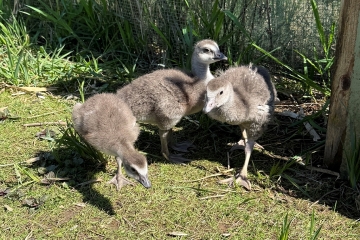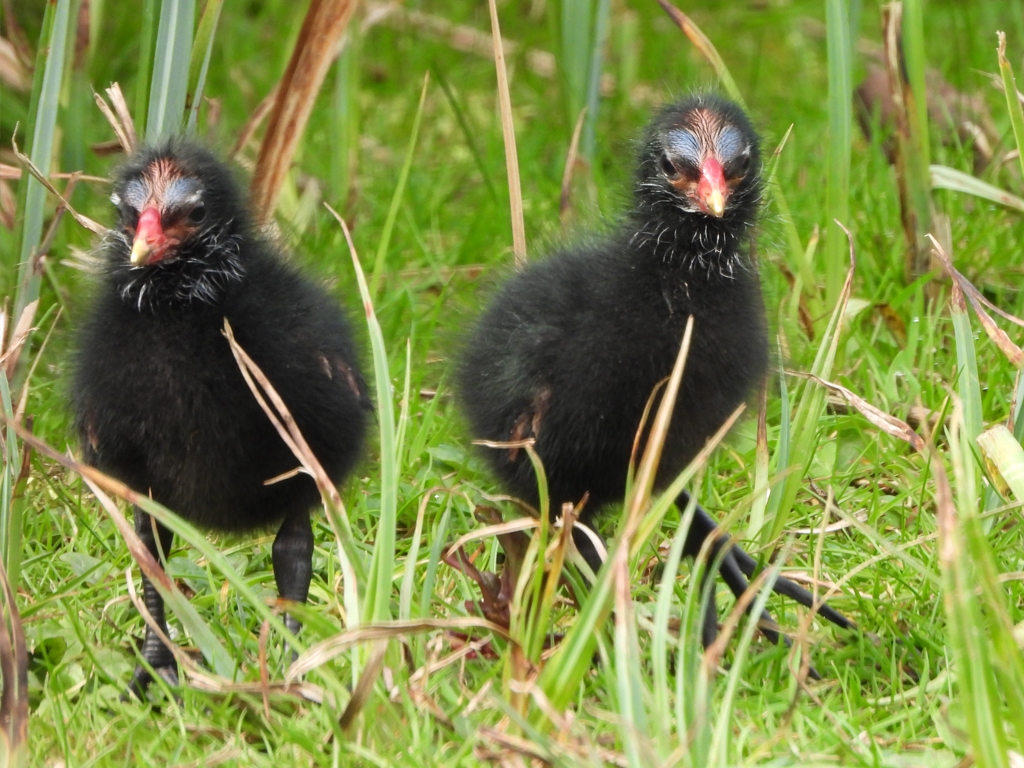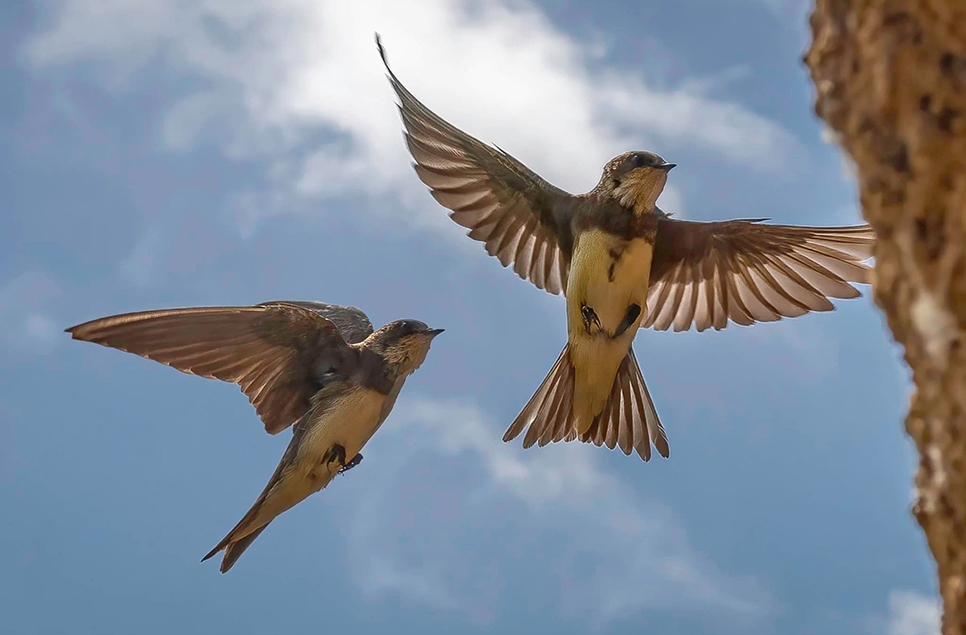Arundel team advises Argentinian wildlife conservation effort
Sam McKinlay, the Head Keeper at WWT Arundel Wetland Centre, manages the most successful breeding colony of Black-necked Grebes in any zoological collection in the world.
Gabriela Gabarain, Patagonia Program’s Veterinarian at Aves Argentinas organisation - national representative of BirdLife International -- , visited Arundel in July to discuss all aspects of grebe care with Sam. This was part of a knowledge-exchanging trip with WWT, aiming to share experiences that will hopefully assist Aves Argentinas with their chick rearing, head-starting to save the critically endangered Hooded Grebe, a similar species in southern Patagonia..
Arundel Wetland Centre is the only collection in the world breeding black-necked Grebes. Head Keeper Sam McKinlay has raised grebe chicks at Arundel Wetland Centre since the first birds arrived from Rotterdam Zoo in 2020. WWT is leading on the publication of a ‘best practise protocol’, a guide to breeding grebes for the EAZA (European Association of Zoos & Aquaria) EEP [European Ex Situ Programme) to ensure a population of healthy birds exists for future conservation efforts.
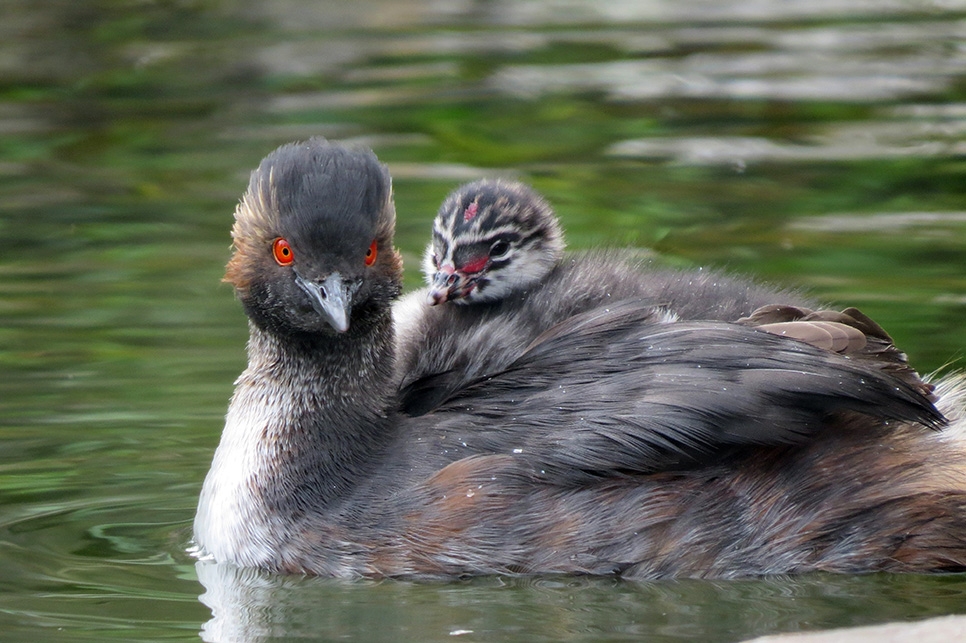
An adult black-necked grebe on the water with a chick on its back Photo: WWT
Sam McKinlay said: “Our success with the Black-necked Grebes is due to our team’s careful monitoring of the birds, their habits and their eggs.”
William Costa said: “WWT has decades of experience managing captive collections of water birds and taking those ‘zoo ‘based skills into the field, to save the rarest birds from extinction. We hope that Gaby’s time at WWT will help Aves Argentinas’s Hooded Grebe project go from strength to strength”.
Gabriela Gabarain, a veterinarian with the Patagonia Program of the conservation organisation Aves Argentinas, spent the day with Sam and her team for advice on grebes. Gabriela also spent time at WWT’s central site in Slimbridge Gloucester with Will Costa, WWT’s Lead Aviculturist and studbook coordinator for grebes in Europe. Gabriela was able to participate in various veterinary procedures, observe the equipment and sites prepared for the rearing of various species, including Arundel’s Black-necked Grebes, a species related to the Hooded Grebes in Argentina.
Gabriela Gabarain said “The biggest gain I got from this trip are small details that one may not think about and that can be very useful when working with the Hooded Grebes."
Aves Argentinas’s project aims to ‘head-start’ Hooded Grebes located in the province of Santa Cruz, Argentina in the vicinity of the Patagonia National Park. The birds breed in highland lakes on basaltic plateaus in the western part of the province, and sadly, just a few Hooded Grebe wild nests were successful in 2022. In the wild, Hooded Grebes lay two eggs with usually only one egg hatching. Project staff removes one of the two eggs, hatch and rear them in captivity and subsequently release them back into the wild. WWT has run similar programs for Spoon-billed Sandpipers in arctic Russia, andBlack-tailed Godwits and Eurasian Curlew in the UK.
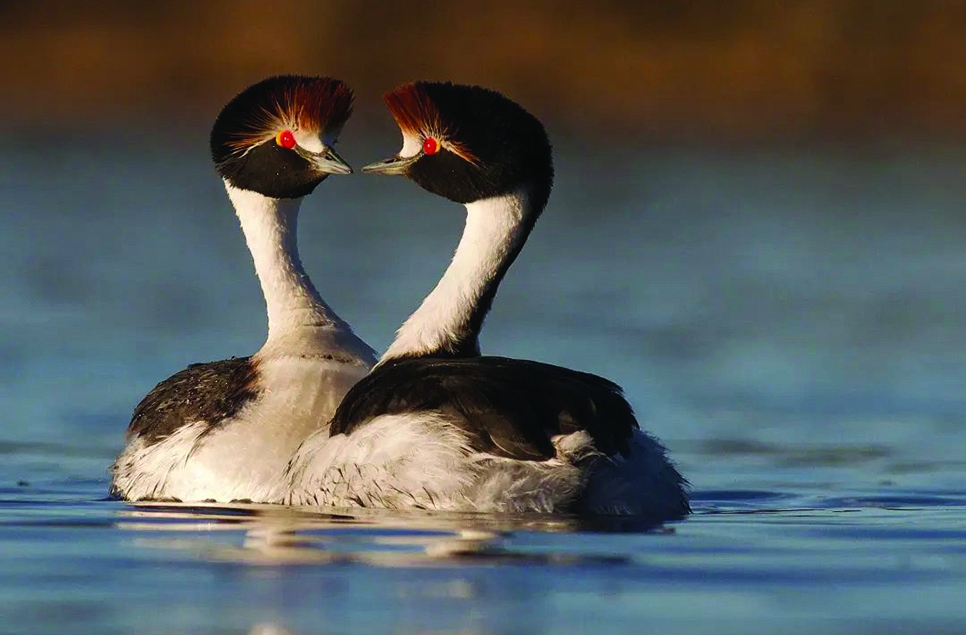
A pair of hooded grebes in Patagonia Photo: Aves Argentina
